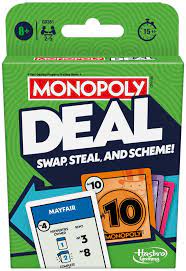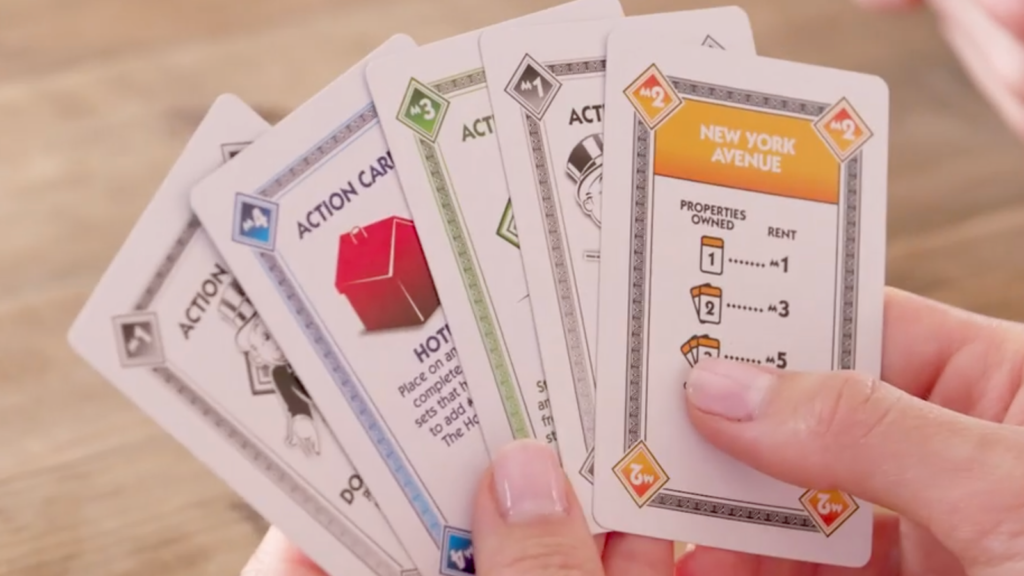Game Play
During gameplay, the objective of Monopoly Deal is to collect three complete property sets before your opponents. The game starts with the starting player taking their turn, followed by clockwise turns around the table. Each turn begins by drawing two cards from the draw pile, replenishing the player’s hand. Up to three cards can be played, which can be money for payments or purchases, action cards with special effects, or property cards to build sets.
Property sets allow players to build their properties and collect rent from opponents by using action cards. Action cards provide strategic advantages and can disrupt opponents’ plans. Money cards are used for transactions, and the bank serves as a source of additional money. Each turn ends by ensuring a hand containing no more than seven cards and playing strategically. The game continues until a player collects three complete property sets, each in a different color, securing victory. Players must make smart moves, negotiate deals, and strive to achieve the winning condition in Monopoly Deal.




